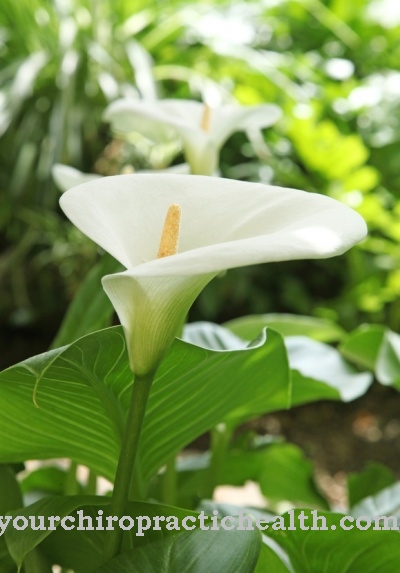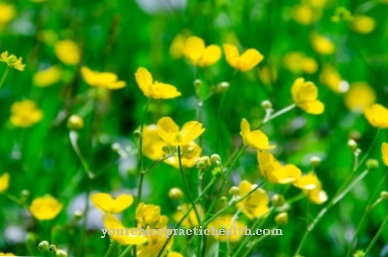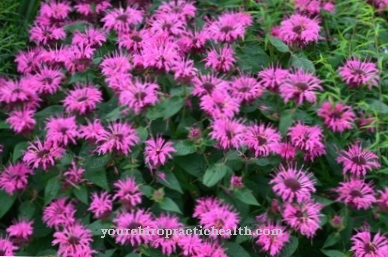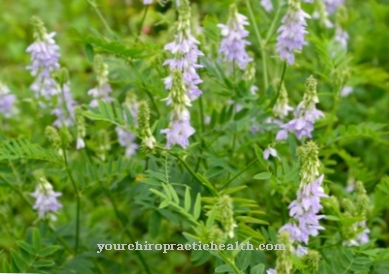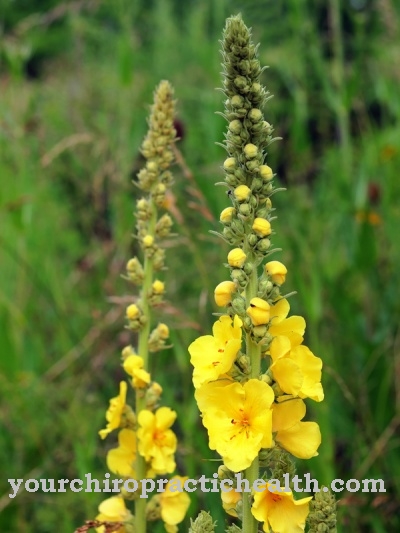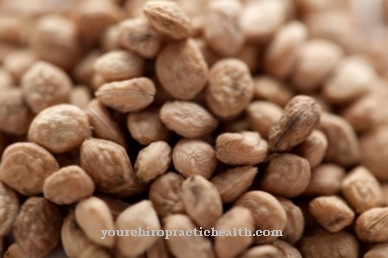The onion is the most widespread and cultivated form of the leek plant genus. In its most famous form, it is primarily used as a vegetable.
Occurrence & cultivation of the onion

The Onion plant It does not appear as a wild plant in its present form, but its cultivation began over 7,000 years ago.
The onion is a biennial crop that is typically grown annually. Modern variations are 15 to 45 cm high, the leaves are green-bluish and are reminiscent of fans in shape. The round bulbs of the onion are used as a vegetable in kitchens around the world and have their specific shape and appearance depending on the growing region and type.
The best known types are the yellow, white and red onions. Onions also vary in taste in sweetness and heat. Characteristic for their appearance is the round shape and the edible tissue of the tuber, which has grown in layers.
Application & use
Onions are mainly used in the preparation of meals. For use in warm dishes, they are peeled and chopped up and heated with other ingredients in a saucepan or pan. But there are also some onion-based dishes, such as French onion soup or onion chutneys.
The onion is very versatile when it comes to processing. It can be baked, boiled, braised, deep-fried, fried, roasted, or eaten raw. They are also used as a thickener for sauces or as a food pickled in vinegar. The onion is one of the daily ingredients in the kitchen all over the world. The yellow (or brown) onion is particularly popular with caramelized and is a very good base for sauces, especially in French cuisine.
The white onion has a very prominent place in Mexican cuisine, when seared it acquires a golden-brown color and a pleasantly sweet taste. The red onion is particularly popular in the cuisine of the Near East, for example in Turkey. Unlike mostly in Germany, it is used there in larger quantities and more as a vegetable; for us, when used in smaller quantities, it has more of the function of a spice.
Because onions have particularly large cells, they have been used in science education for a long time. Schoolchildren and students are shown onions under a microscope to study the structure of organic cells. The juice of the onion is also used as protection against moths, and rubbed into the skin, the juice can prevent mosquito bites.
In the past, onion juice was also used as a polish for glass and copperware, or to protect iron from rust. The yellow skin of the onion can be used for coloring (for example soups or sauces, but also clothing).
Significance for health, treatment & prevention
Most Types of onions consist of 89% water, 4% sugar, 1% protein, 2% fiber and 0.1% fat. They are rich in vitamin C, vitamin B6 and folic acid.
The onion is low in fat and salt, and with only 40 kilocalories per 100 grams, they enrich the taste of many dishes without significantly increasing the amount of energy. The onion contains phenols and flavonoids, these have anti-inflammatory effects, have positive effects on the cholesterol balance, prevent cancer and act as antioxidants. The benefits of antioxidants for the human body are numerous. Shallots are particularly rich in these. They contain up to six times as much antioxidants as, for example, yellow onions.
Furthermore, very positive effects on the blood sugar level were found. Onions can lower blood pressure and prevent heart disease. Some people are allergic to contact with onions (itching, asthma). Consumption is mostly harmless for these people, as the responsible proteins become ineffective through the preparation. While it is safe for humans to enjoy, feeding raw onions to dogs, cats, guinea pigs, or other animals can be fatal. They are not able to digest the vegetables.
Some Indian sects prohibit the consumption of onions because they are considered an aphrodisiac. Schools of Buddhism also advise against onions, as they are supposed to stir up desire in cooked form and anger in raw form. When onions are cut, enzymes contained in the cells are released, which develop into sulfenic acids in the air. These can cause irritation in the eyes. This can be remedied by cooling the onion or cutting it under warm water. However, the more often a person cuts onions, the less susceptible they are to reacting to sulfenic acid.

